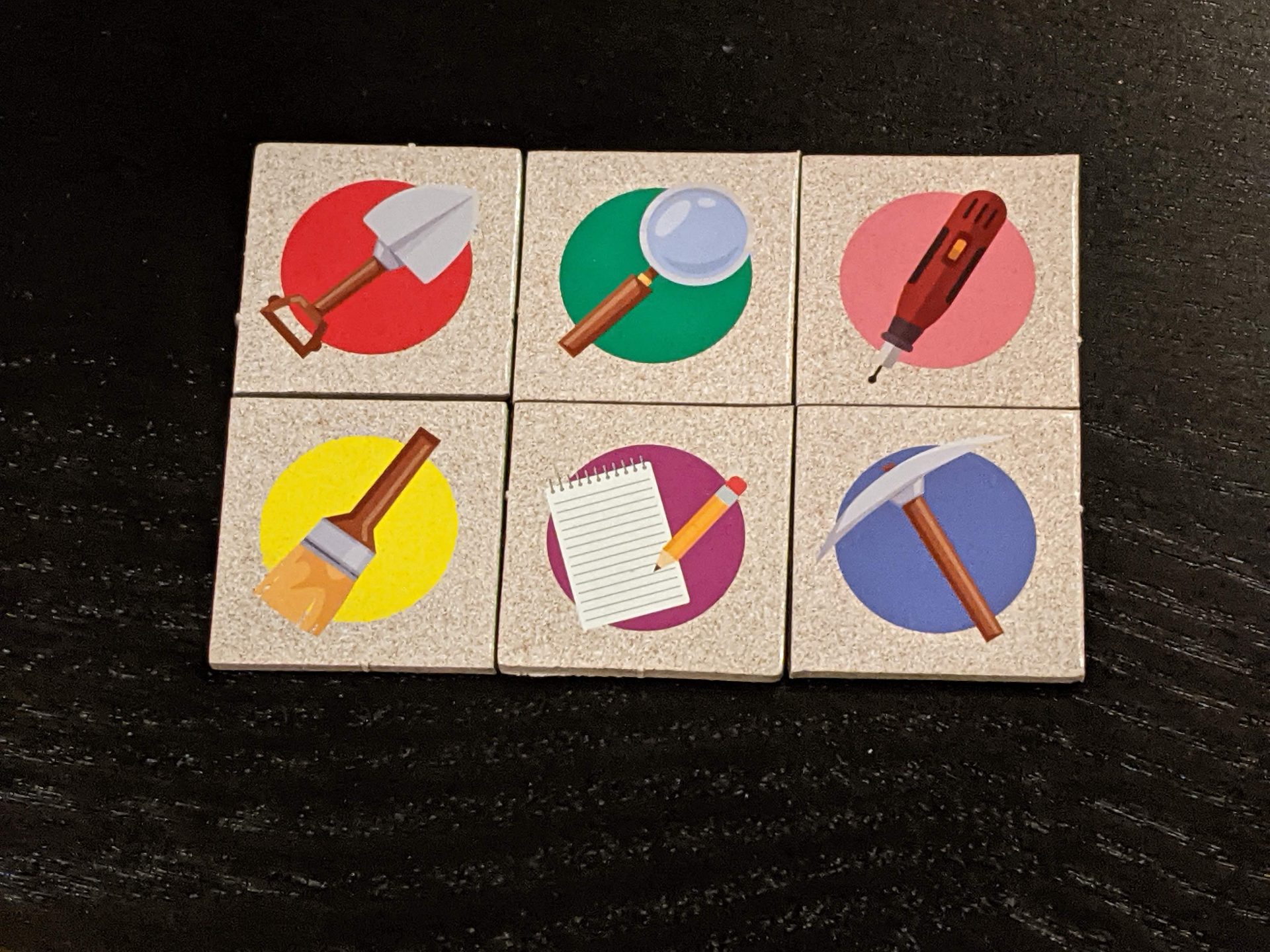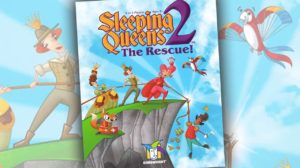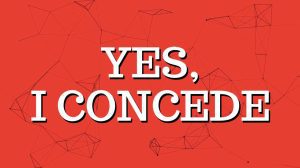The last turn of my first game of Fossil Canyon came down to just one thing…who would find the T-Rex?
“HAHAHAHA! I found it, Daddy! I FOUND IT!!!”
It was true. My seven-year-old daughter really had found the fourth and final fossil piece for the Tyrannosaurus by picking up the last piece on her final draw. The Pink Museum had beaten The Green Museum by just a few thousand visitors to take the victory.
We shook hands, as is custom in our family after any game we play. If only I could have found another set of fossil parts to complete a Mosasaurus…another time, perhaps!
Stories like these have popped up in all of my plays of Fossil Canyon, a fantastic and accessible set collection family game (ages 6 and up) which was designed by Kevin Lynch and developed in collaboration with The Field Museum in Chicago. This collaboration means that you not only get a good game but a history lesson in creatures from the Mesozoic Era, including the 11 dinosaurs featured in the game.
What makes Fossil Canyon shine? Continue to dig for more details!
Sign up to be notified of the launch of the Fossil Canyon Kickstarter.

“Would you like a visitor’s guide, sir?”
Fossil Canyon puts players in the roles of paleontologists, who are each supporting their own museum by going to a “dig site” ( which consists of all of the playing cards being scattered in the middle of your table) to find skeletons to put on display. These skeletons will help draw visitors to your museum. When the dig site is empty, scores are tabulated and the museum with the most visitors wins.
Players start the game with a range of cards (anywhere from four to ten, based on player count) and will make sets with various parts of each dinosaur’s skeleton, anywhere from two to four fossil parts to make a match. After scoring any matches you have on the opening draw, you’ll have a few cards in your hand (secret to other players) and a display of your remaining cards face-up in front of you.
Turns are very quick. First, you must “dig” a card from the dig site by taking a face-down card into your hand. (All children will love this step; my daughter yelped with delight each time she got to sort through all of the facedown cards to dig for a new one.)
Then you can optionally offer a card to another player face-up, in exchange for one of their face-up cards or a card in their hand. Any resulting matches are scored, then you’ll take a bonus card from the dig site if you made any matches on this turn before adjusting your private hand cards to three or less.
Skeleton sets? Also very easy to manage. Fossil Canyon features a bright, colorful and well-constructed card layout which allows anyone at the table to quickly tell which parts of a particular dinosaur you have and what you’ll need to complete a set. You can either look at the large numbers in the left-hand corner—for example, the Stegosaurus has two parts and if you have the “1” and the “2”, you’ve completed the skeleton for this dinosaur—or look at the “x-ray” of each dinosaur to see if you have a head, body, tail or leg skeleton pattern instead. My seven-year-old picked this up by the second turn, and adults will decipher this system without any issues.
There is a twist with these sets, however. Before a game of Fossil Canyon begins, the dealer will permanently remove four cards from the game. This means that a couple of sets won’t have all the fossil parts needed to complete a set…which could be a factor when you are hoping to find that fourth piece of the T-Rex but it was never in the game! (Yes, this happened in one of our games; the drama!!)
The end of the game is triggered when the dig pile is out of cards. Any final matches from cards in hand paired with trades which can be made with other players are added to your score before the final tally.
My favorite part of Fossil Canyon is the scoring system. Polymath Play designed the game to eliminate the math completely. Players will add a puzzle piece to their museum each time a skeleton is completed, which is tracked for all players so you can tell at a glance who has the lead. Each puzzle piece is scaled to reflect the number of visitors, and there’s a helpful picture of each dinosaur on the piece.
It’s a great technique and a great visual to track scoring…and games are always close, so it has been fun to track scoring right to the end.

Gameplay that scales with the players
The base game of Fossil Canyon runs about 30 minutes for three players. But instead of using the entire deck of playing cards—which includes 58 fossil cards and six action cards that feature one-time and ongoing abilities—the developers detail a way to slim the deck to create a shorter game, a great option if your seven-year-old just so happens to have a short attention span.
Additional variants for Fossil Canyon change the scoring to include bonuses for players who specialize in adding certain types of dinosaurs to their museum. (Of COURSE there’s a way to get extra points for specializing in carnivores!) You could even play Fossil Canyon as a twist on “Go Fish” by using genus types as suits, or focus on the learning experience by making Fossil Canyon a twist on “20 Questions.” Visit the developer’s website to learn more about a co-op version as well.
Prior to my first play, my main concern with Fossil Canyon was whether it would work for other adults when no kids were involved. I completed a three-player game with two guys from my normal game group to find out, and I am happy to say that the experience was just fine. It will never crack nights when we are putting something heavy on the table, but as filler to either start or end a longer game night, it will work well. (And all three of us love the scoring puzzle system. I’m really surprised I have not seen that elsewhere!)

So should you go to the museum?
Now that I’ve gotten multiple plays under my belt, I have to say that I really enjoy Fossil Canyon, mainly as a game for my family. Everyone at home loves dinosaurs so this is right up our alley. The play is quick, and the trading aspect makes things interesting, particularly for my seven-year-old as she learns to play the match game with everyone else’s tableau.
The scoring system is the best part, but even trying to pronounce the dinosaur names each game is fun for all of us. Little touches, like ways to scale the game based on collecting sets based on dinosaur type or era, are great.
My prototype copy of Fossil Canyon looks great, and the tarot-sized cards work well because there are so many data points on each one. One concern I had was about my daughter’s ability to hold cards in her hand,but because you only have three or fewer on a given turn, it’s a non-issue for small hands.
The sheer amount of learning opportunities in the box are great. Between an instruction manual that walks players through dinosaur history and a push to get players to visit The Field Museum opportunities abound to engage with your children..
One open question, maybe a disclosure more than anything else: I don’t think this would play well at 5-6 players, but admittedly I’m guessing here. I’ve only played this at two and three players so far; at four or more players, I speculate that Fossil Canyon rides the line between fun and a little slow as you wait to take turns while potentially watching the cards in your hand or in your tableau constantly changing hands.
Otherwise, I really enjoyed this game. The best compliment I can give is that my daughter keeps asking to play it again. Take the plunge and back Fossil Canyon when it hits Kickstarter in May!












Thank you for your thoughtful review, Justin! We are certainly glad that you and your family enjoy it!
Sure thing! Excited to see this come to retail!